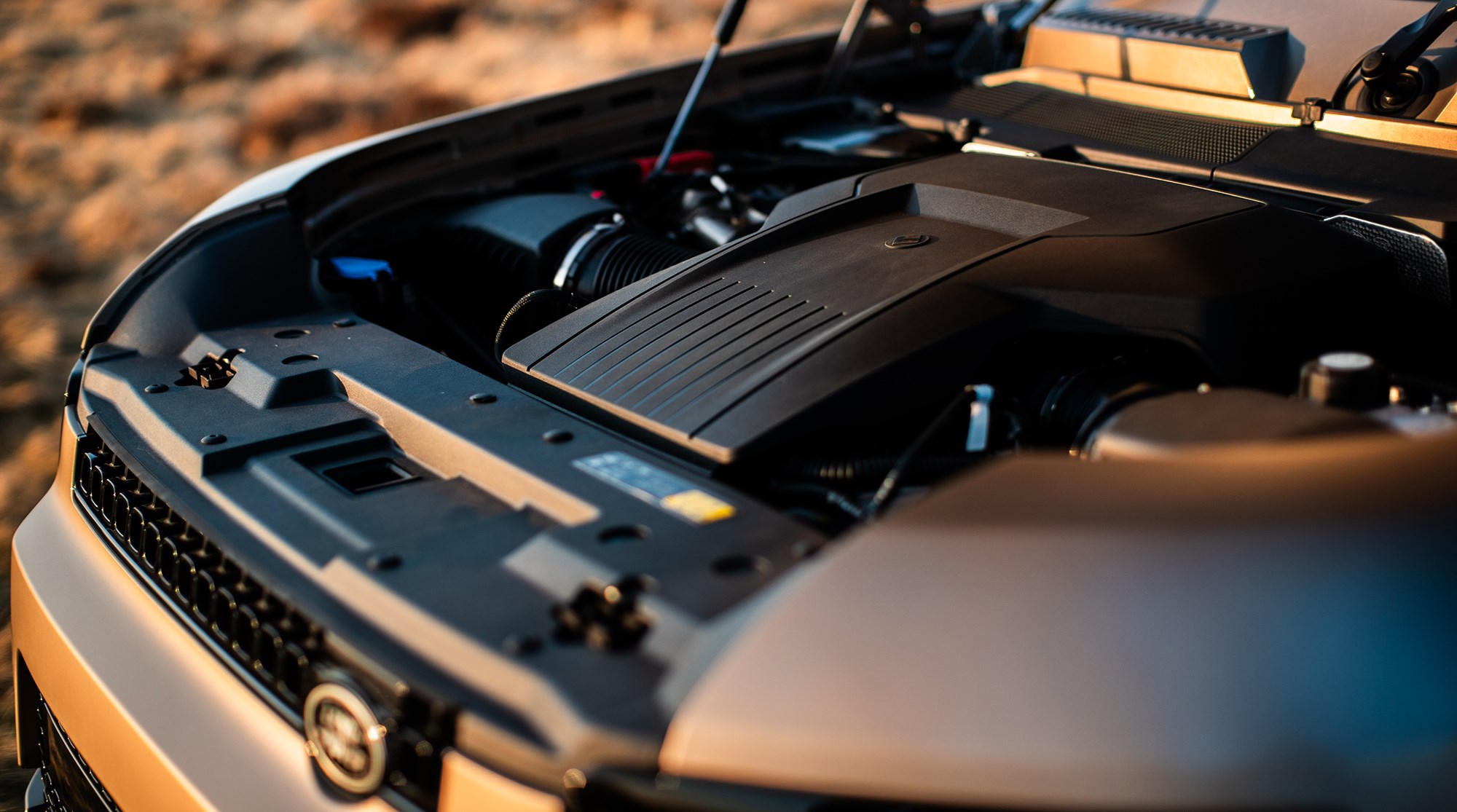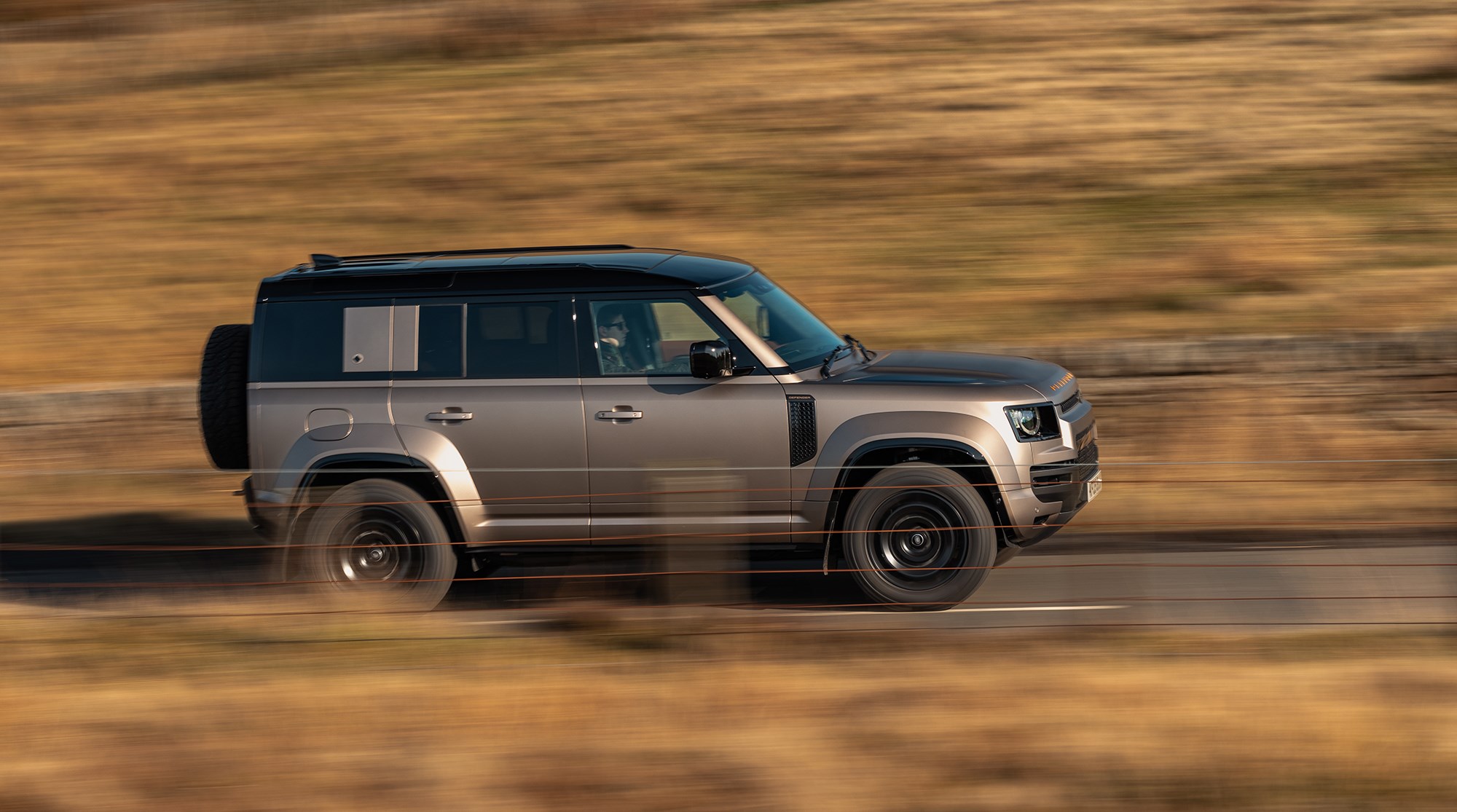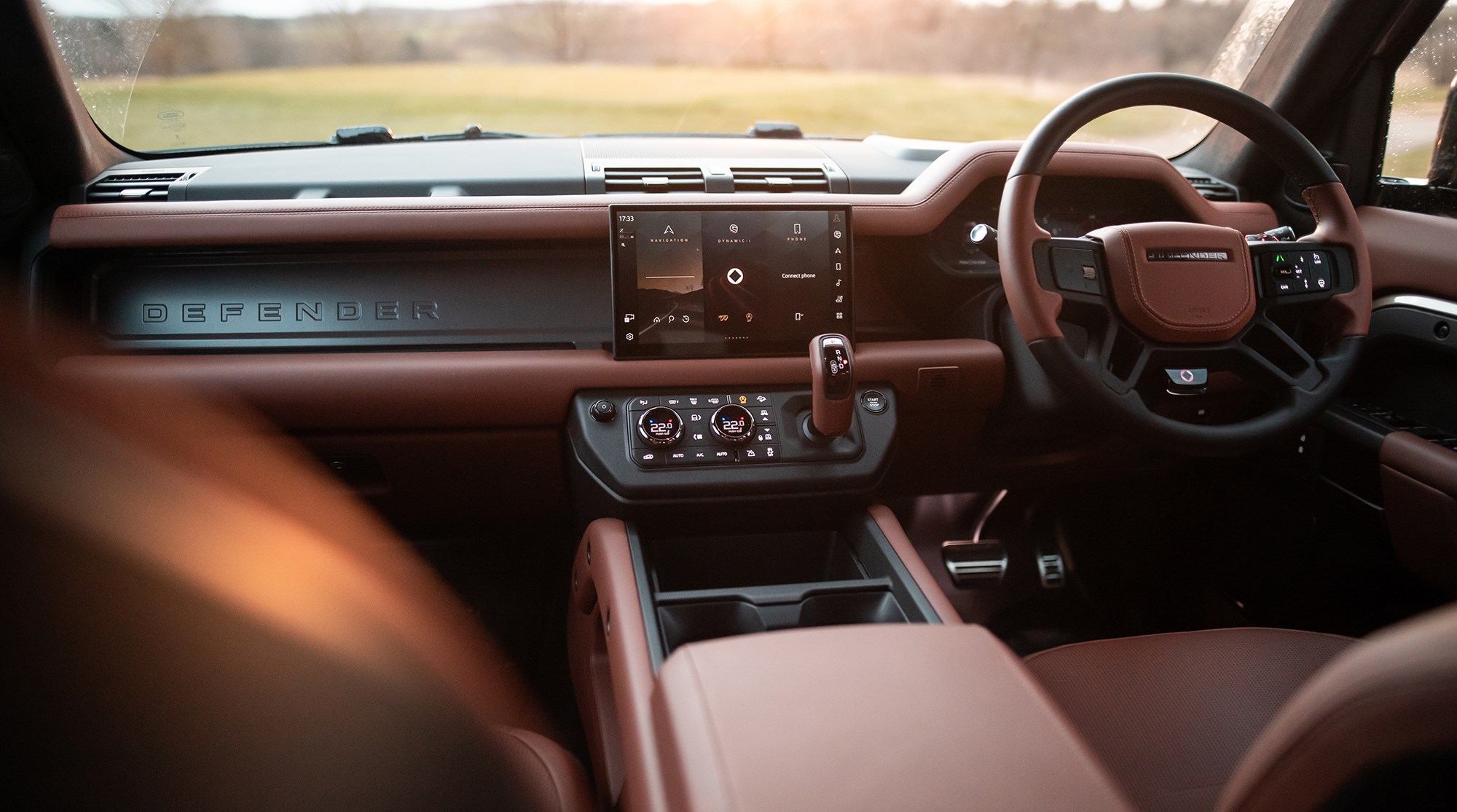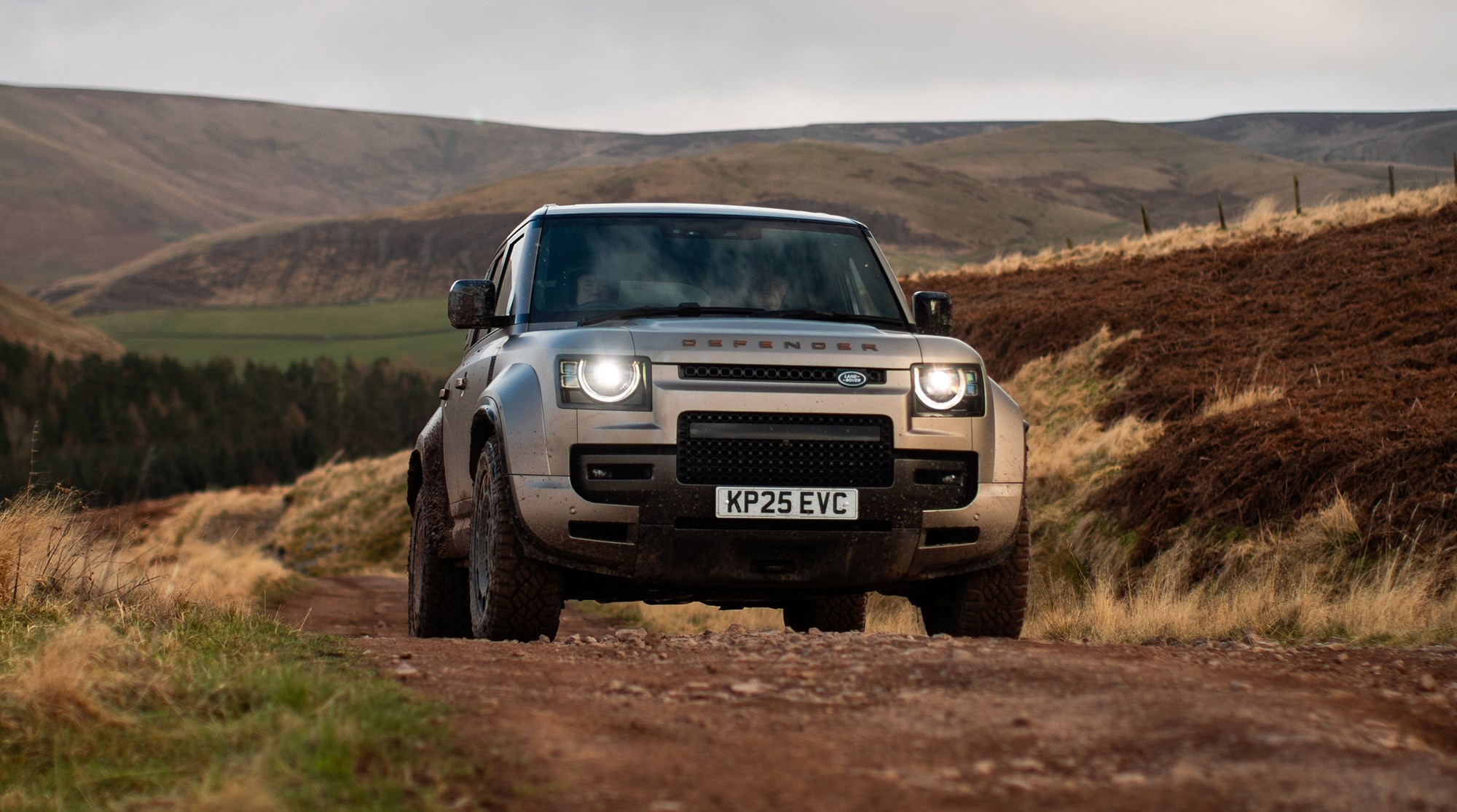► Defender Octa tested on road and way off it
► V8 power, clever suspension, from £145k
► Several examples now driven in the UK – all brilliant
Five years on sale and the Land Rover Defender continues to re-write the (entirely figurative) rulebook. Demand, far from decaying, continues to increase, with global sales now fast approaching 500,000 units. It’s been a great success, which is helping fund the next step of JLR’s development into the brave new(ish) world of electrification.
In part, the Defender has been a classic case of right first time. But Land Rover’s also continued to evolve its other icon (Range Rover’s also flying high) with new powertrains, new bodystyles and new technology. And now it’s created a flagship to go up against the mighty Mercedes-Benz G-Class. The brief? Create Land Rover’s fastest and toughest off-roader yet, as befits a machine set to take Land Rover back into the brutal Dakar rally.
At a glance
Pros: Speed, steering, brakes, sheer unstoppable breadth of ability
Cons: Sports seats aren’t the comfiest, engine lacks the old V8’s charisma
What’s new?
Forget your SVR-tuned Range Rovers. This is something else entirely. Where they are all about turning these behmoths into fully-fledged performance cars, the Octa treatment turns it up a further notch by making a performance Defender with SVR poise that can deliver huge speed off-road, too. Tough brief.
The Octa takes the Defender 110 body and, in a wholesale re-engineering job, upgrades almost everything bolted to the core, unchanged body-in-white. The big news concerns power and suspension. You can’t currently buy a core Defender 110 with a V8 engine (the 90 and 130 can still be had with the old 5.0-litre V8 supercharged unit).
Instead, the Octa uses a version of the 4.4-litre, twin-turbo V8 sourced from BMW (and pretty much shared with the M5) and also deployed in the Range Rover and Range Rover Sport. Turned up to 626bhp and 555lb ft of torque here, it makes this 2.5-tonne SUV as quick 0-62mph as a BMW M2.

But really that’s not the Octa’s secret weapon. The core Defender runs a normal-ish combination of air suspension with adaptive damping and mechanical anti-roll bars. The Octa loses all of that, replacing it with a hydraulically interlinked, semi-active system that gives the car full control over its pitch and roll and, on paper at least, redefines the Defender’s performance parameters.
What does that mean? Off-road, it means the Octa enjoys the kind of unfettered wheel articulation impossible with conventional roll bars, together with a degree of body control the core car would kill for. So, more performance off-road and more performance on it. Add in one metre of wading depth and you’re left with something very special and unique.

What are the specs?
A 626bhp V8 in a 2.5-tonne, five-metre-long SUV with two rows of seats and a handy boot. Fit the appropriate tyres and 155mph is on the cards – in a superlative off-roader that’ll also haul the family in comfort.
How does it drive on road?
The first thing to get your head round is that the Octa isn’t a more off-road orientated version of the Defender in the same way that, say, the SV is a more performance-focused version of the Range Rover Sport. The engineering changes are aimed at making it better everywhere, within the limits of whichever tyre you choose to fit.
Talking of which, three options are available: an all-season, road-focused tyre on a 22-inch wheel; an all-terrain tyre on a 20-inch wheel; and an advanced all-terrain Goodyear Wrangler (the most dirt-focused rubber Land Rover’s ever offered as an option), again on the 20-inch wheel. We’ve tested the car on the latter only, both overseas and in the UK.

Everywhere you drive the Octa, the faster steering rack – borrowed from the Range Rover Sport SV, with a ratio of 13.7:1, down from 17.5:1 – works beautifully. On the tarmac, particularly slaloming typical sweeping Scottish R-roads, it means you’re working with small, neat inputs rather than great sweeps of the wheel. Because you’re sat at eye-level with Transit drivers, you also enjoy great sight lines, making flowing it along at a fair crack far easier than, say, a far more nimble and low-slung hot hatch.
That faster rack helps key you into the front axle and, when you get the Octa gently out of shape at speed – which rapidly becomes second nature – make the required corrections quickly and deftly. Of course, this steering wouldn’t work anywhere near so nicely in the standard Defender, with its more generous levels of bodyroll, but in concert with the Octa’s flat cornering, particularly in Dynamic mode on the road, it elevates the Defender’s fast-road capability by a significant margin.
Equally sweet are the brakes; a powerful and progressive Brembo set-up with a dedicated off-road calibration for loose surfaces. Like the steering, its power and delicacy pay dividends everywhere, whether you’re hauling down from three-figure speeds for a gravelly hairpin or picking your way down a rock face on an angle so steep your passenger’s having to use the grab handles.

Ride quality is more than acceptable considering the performance envelope this car is helping to redefine. The serious off-road rubber isn’t the quietest on smooth tarmac and lends a subtle, knobbly edge to the ride quality that likely isn’t a factor on the three-season road rubber. As it stands, most buyers would happily live with this set-up on typical UK roads, because of the statement of intent that they make.
However, even in Comfort mode the 2025 Land Rover Defender Octa is no Range Rover, and deliberately so. The engineering team could have done anything here, given the bespoke nature of this suspension system, but wanted to retain some Defender honesty rather than going full Range Rover waft. We’re happy with that. As it stands, this remains is an awesome big-mile road device – comfortable, easy, fast – a hell of an achievement on this pretty extreme tyre.
How does it drive off road?
This is a broader (by 68mm) and taller (by 28mm) Defender with more of almost everything; more ground clearance, more wading depth, more wheel articulation, more power should you need it, and more agility. All the standard terrain response modes are present and correct (as is a low-range transmission for the really technical stuff), while the new Octa mode can be short-cut accessed via a (weirdly cheap-looking) button on the steering wheel.
For this, think Baja or Dakar. The roll control is wound right back, so that the wheels can go crazy following the terrain, while the damping force is ramped right up. The result is imperious high-speed, off-road performance. Throw corners into the mix and this monster become balletic, despite its size and weight, the quick steering, rear-biased all-wheel drive and snappy throttle response letting you initiate slides on the brakes and hold them on the power.

Talking of power, the Defender Octa is never short of the stuff. The V8 is a fine engine, with immaculate manners at low speed, off-road, where a wrong move might rip a wheel off, and bombastic on the road, with the sheer punch to make this not light car feel properly fast. Yes, the old 5.0-litre supercharged V8 sounds better and feels more appropriately meaty, but the Octa is far from anaemic in the sound department.
However, place the Octa in Dynamic mode, for the sharper throttle response and increased engine noise (a set-up screen lets you run these settings but with the steering and suspension in comfort), and you’re unlikely to come away disappointed.
What about the interior?
This remains largely familiar from the core Defender, and that’s a very good thing. This is still a fantastic interior; chunky and industrial in its design but rendered luxurious by the hushed refinement, strong fit and finish and high-quality materials. Think deep-seated and rugged, and you’re there.
The top-spec Edition One cars (from £160,800; 2500 units globally) sprinkle in some interesting colours and a chopped carbonfibre finish in a few places, which is as odd in this context as it sounds. Although it initially looks a little Mansory, the shock value soon settles.
We’re equally unsure about the Octa’s Performance front seats, with hefty bolsters and integrated headrests. They look the part, and the additional lateral support is a must-have if you’re planning to explore the car’s limits on the road or off it. But they lack the all-day comfort of the standard Defender’s seats, leading to shuffling bottoms in on longer drives.

The Octa retains all the Defender’s good stuff, including its super-useful off-road tech (cameras everywhere, to help you pick your line, plus wade depth sensing – the limit’s up by 10cm here to one metre) and slick Pivi Pro infotainment, with its glossy and crisply responsive screen (climate controls are physical, joyously, as are a lot of the off-road function controls).
Land Rover’s also implemented a very neat way of turning off all the annoying mandatory but intrusive driver-assist tech, with just a couple of pushes of a steering wheel button to disarm it all. Less successful are the optional and gimmicky Body and Soul seats, which use vibration to let you feel as well as hear your music. Nice idea, and it works better with big, high-energy music, but it’ll be a ‘use once and forget’ novelty for most.
Before you buy
The Land Rover Defender Octa is already selling strongly, and it’s not hard to see why. The Edition One might look expensive but at £145,300 the regular Octa is approaching good value considering what it’ll do. A 130 Defender with the V8, once optioned, is a £120,000 car, adding context to its pricing, while an AMG G63 is more expensive still – which must be a point of annoyance for the Germans.
The obvious, big rival is the flagship Benz-badged G-Class. It too is a crushingly capable off-roader that’s also fast and comfortable on the tarmac. The G500 is Octa money; the G63 a whole lot more. Neither are as special.
In terms of performance and fun three less obvious rivals emerge, though at wildly differing price points. The Lamborghini Huracan Sterrato and Porsche 911 Dakar are a whole heap more expensive, if you can lay your hands on one, but have something of the OCTA’s fun-loving mindset. While the Ariel Nomad is worth considering if off-road giggles are the priority, it obviously lacks any shred of the Octa’s practicality or comfort. The Ford Ranger Raptor is another leftfield alternative, and more affordable – and worth serious consideration.

Verdict
At the core of the Land Rover Defender Octa’s character is an irresistible combination of deadly serious capability and laugh-out-loud fun. Outrageously capable off-road, particularly at speed, and way keener on tarmac too than the standard Defender, this is an impressively versatile machine. But it’s a blast to drive too – fast, charismatic and incredibly playful for a 2.5-tonne SUV.
Has the Defender lost anything in translation? Of course. The Octa is a niche proposition, certainly on the full-house off-road tyres. The regular Defender, rather than the Octa, will be all the car you need 95% of the time, especially in the UK if you don’t happen to have a country estate as your playground.
But the Octa is a bit special. Begin to really put it through its paces, on road or off it, and – far from coming unstuck – it simply gets better and better. Land Rover seems surprised at the Octa’s success, with more than 4500 orders in the bag to date, but surely this was only ever going to be a smash hit. It’s becoming clear that, five years in, there’s nowhere this car can’t go; nothing it can’t do.
